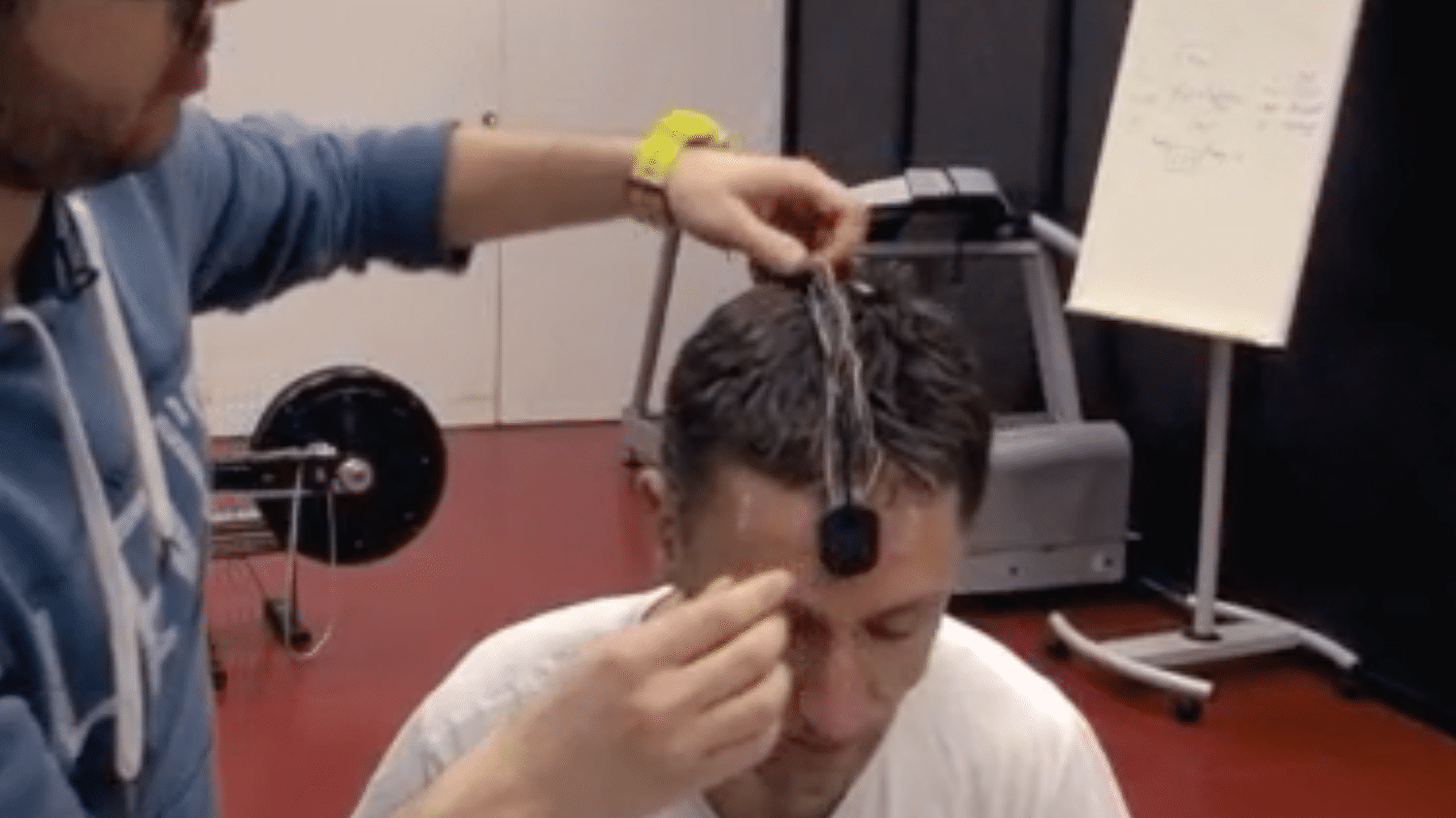Published
Video length: 3 min
Brain stimulation for sport
A documentary goes behind the scenes of the preparation of athletes for the 2024 Olympics and closely follows the scientists responsible for optimizing their performances.
(Wide Angle production)
One month before the start of the Olympic Games, a documentary, broadcast Thursday evening on France 5, goes behind the scenes of the preparation of French athletes, with scientists responsible for optimizing their abilities.
How much can athletes improve their performance by working on their physical and mental skills with scientists? A few weeks from Paris Olympics, which begin on July 26,e documentary Faster, higher, strongerdirected by Hugues Demeude and Stanislas Kraland and broadcast Thursday June 27 on France 5 (9:05 p.m.), examines the exciting evolution of sports preparation. From the first Olympic Games in ancient Greece to the backstage of the French “champion factories”, the two directors study the physical and psychological work of high-level athletes. Athletes now supported by specialists who work in the shadows to optimize their abilities and push the limits of their body.
Since the Olympics were awarded to France, French sport has invested massively in science for performance. Neurologists, experts in artificial intelligence or biomechanists accompany swimmers, cyclists, sprinters or rowers on a daily basis… In order to leave nothing to chance in their training. If technological innovations have been improving cutting-edge materials used in equipment for years, these researchers have made it possible, for example, to optimize certain gestures to save athletes precious seconds.
Neuroscientist Claire Calmels works at the National Institute of Sport, Expertise and Performance (Insep), Mecca of sports training in France, with badminton players. A sport which requires dexterity, speed and in which there are an infinite number of possible strokes in order to restart a steering wheel which can go up to 400 km/h. The neuroscientist has developed a computer program that allows athletes to watch matches and work on their strategy by stimulating their brain. “It’s an extraordinary organ. It will create new neural circuits which, during training, will be used more and more”she explains in the documentary.
But pushing athletes to surpass themselves is not without risks and these researchers must also protect competitors from any physical problems before the big event. Léonice Huet is a great hope for French badminton. Rather than wearing herself out physically on the court to improve her responsiveness, the young woman trains on the tool created by Claire Calmels to become faster. She observes sequences of play and must, as quickly as possible, decide where to send the shuttlecock. A way to free herself from physical practice while optimizing her performance.
Alongside him, Yoann Morillo, video analyst at Insep. “The player who is training is obliged to take information other than the trajectory of the shuttlecock. (…) It will take into account the position of the body in space: is it balanced or unbalanced? (…) What spaces are available on the opposing field before the strike? We will have both tactical information and biomechanical information.”he explains. Thanks to this exercise, unconscious learning takes place in the athlete’s brain, which thus puts aside his thinking, and promotes his instinctive reactivity, making him more efficient.
The documentary Faster, higher, stronger, directed by Hugues Demeude and Stanislas Kraland is broadcast Thursday June 27 at 9:05 p.m. on France 5 and visible on the France.tv platform.
